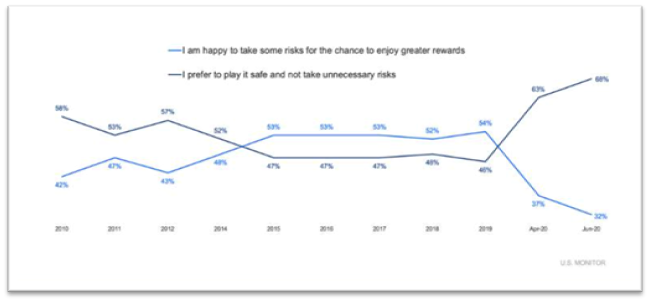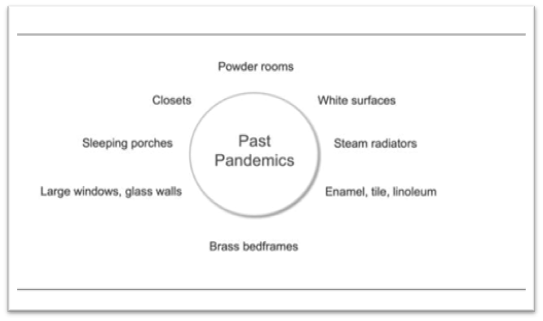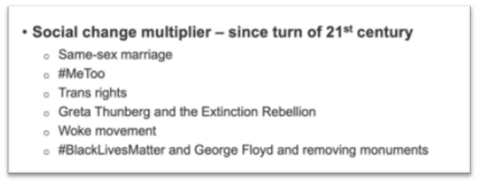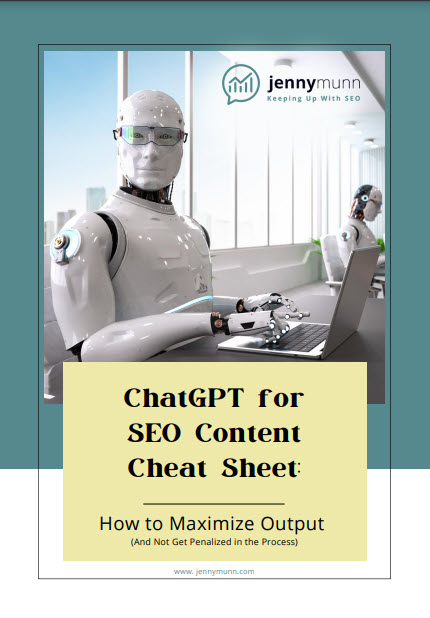While we’re all eagerly anticipating seeing COVID-19 in our rearview mirror, the unknown and uncertainty of what the next 6-12+ months will bring have us tempering our excitement.
I heard this week that a few close marketing colleagues were laid off, that Regal Cinemas is shutting its doors indefinitely, and very belatedly, that one of my favorite childhood staples, Sweet Tomatoes, is closed forever. And more closings and layoffs will inevitably still follow. According to Yelp, data shows 60% of business closures due to the coronavirus pandemic are now permanent.
As part of AMA’s Marketing Week happening this week, I attended a presentation, “New and Not New: Anticipating the Post-Pandemic Future.”
This excellent, thought-provoking, uplifting webinar by speaker J. Walker Smith couldn’t have come at a better time! I took nine pages of notes fast and furiously and wanted to share my top takeaways.
What Marketers Need to Know – “New and Not New: Anticipating the Post-Pandemic Future.”
Here are some of the highlights I took away from Smith’s talk:
- We should expect to see a recovery, but not a complete RESTORATION of what we had before. Most experts are anticipating the worst of the outbreak to end in 2021. And these experts agree it’s more likely this period goes longer, not ends earlier. As in past periods of economic disturbances, natural disasters, and recessions over history, disruption and evolution is the name of the game. I was stunned to be reminded that we’ve already experienced 3 periods of disruption in this 21st century: 9/11 in 2001, the Great Recession in 2008, and now COVID-19 in 2020.
- Established, strong brands are more resilient in times of change. People turn to what they know, not what they don’t know. There has been a booming sale of comfort food, because haven’t we all needed comfort and security the past 8 months? The early days of COVID saw a rush to ecommerce and all things digital and online. However, there is a comeback of all things human scale in the bid to reconnect. Tech is not there to replace human connection. People want to get back NOW to social scale and human connection. Even though the virus is still widespread, there is diminished concern. High on the list is concern about mental health and anxiety of continued isolation.

- What is temporary may turn out to be permanent. Take a look at this graphic showing design features in homes that originated because of past pandemics. And once the pandemics went away, these features didn’t go away just because the disease got under control. Powder rooms and closets? Crazy!

- Consumers are feeling risk aversion. We as marketers must lean in to the task of reassuring consumers about engaging in the marketplace. Just after the financial crisis, people played it safe for years. After the meltdown of 2008, it was 2015 before scarring healed for consumers as a whole. There is a very real concept called psychological scarring. The overhang of this worry is likely to depress spending for years to come. Over-cautious consumers might spend far less, and fewer people will engage fully. What does this mean? Companies will have to work harder and invest more. More investment in marketing and innovation is needed.
- People want brands to do more. Before World War 2, it was the product era, and people focused on accumulating things. After WW2, this began to shift with value changes of the 60s. The market was about the person buying the product, and individualization of preferences. As we turned the corner of the 21st century, it was expected that brands and companies play a public role and contribute to a better society. Attitudes about sustainability have taken on a new urgency. Companies are expected to take a stand on racial injustice, wildfires, and tropical storms. Brands need to live up to expectations to ensure loyalty.

- For B2B, the changes in which workplaces will be configured will be profoundly changed. Gone are the random meetings in the hallway, spontaneous water cooler chats, face-to-face demos, and traditional tradeshows as they used to be. It will be some time before there is a full return to critical mass for business models.
- Hygiene and safety trends will remain for a long time. With hygiene, consumers are concerned that touching money will expose them to the virus. TSA was established after 9/11 to give people confidence and feelings of safety for flying again. Temperature checks might be around for a long time. Health and safety will be a permanent part of the marketplace, and these are attention-getting headlines at the moment. Brands must signal hygiene and security so people will feel good about getting back to normal.
And speaking of “back to normal.” There was an overwhelming consensus that we need to retire the phrases “back to normal,” “business as usual,” and “typical” from our vernacular.
For us marketers, there is tremendous opportunity to address and unlock psychological and pent-up desires. I have no doubt we marketers will be ready to position and promote brands. Also, to define and amplify narratives that include both new innovations and the steadfast familiar that people seek for comfort.
Marketers: are you ready to help remake tomorrow?
Credit for images and bullet points go to J. Walker Smith, Chief Knowledge Officer at Kantar. He has started a periodic blog on LinkedIn called New and Not New where he discusses the post-pandemic marketplace. Check it out here.
Jenny Munn
Latest posts by Jenny Munn (see all)
- Four 2024 SEO Planning Tips for World Domination - November 16, 2023
- SEO Planning Tip: Why You Need a CYA Clause - November 3, 2023
- How Long Does SEO Take to Show Results? (Updated for 2023) - August 9, 2023


